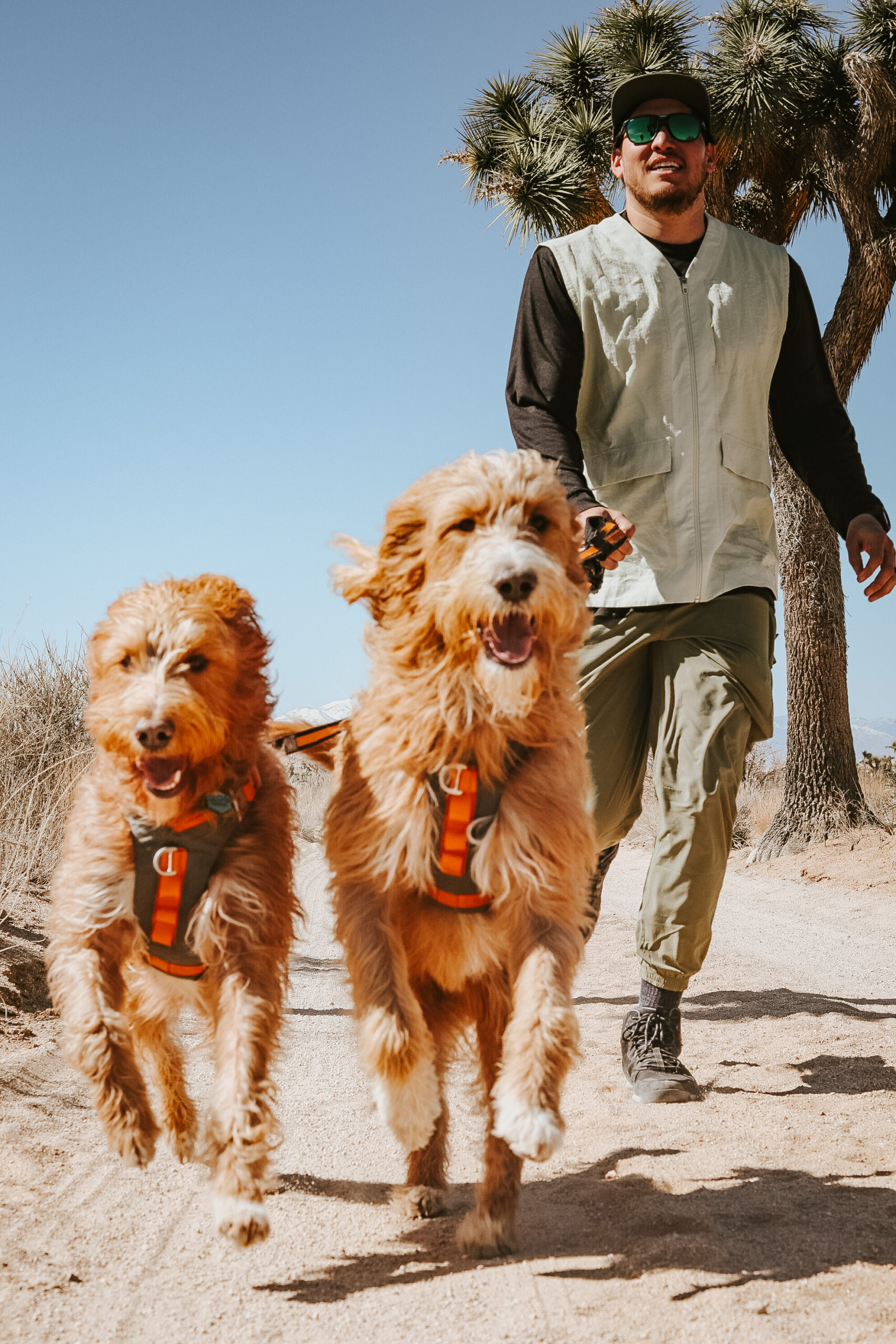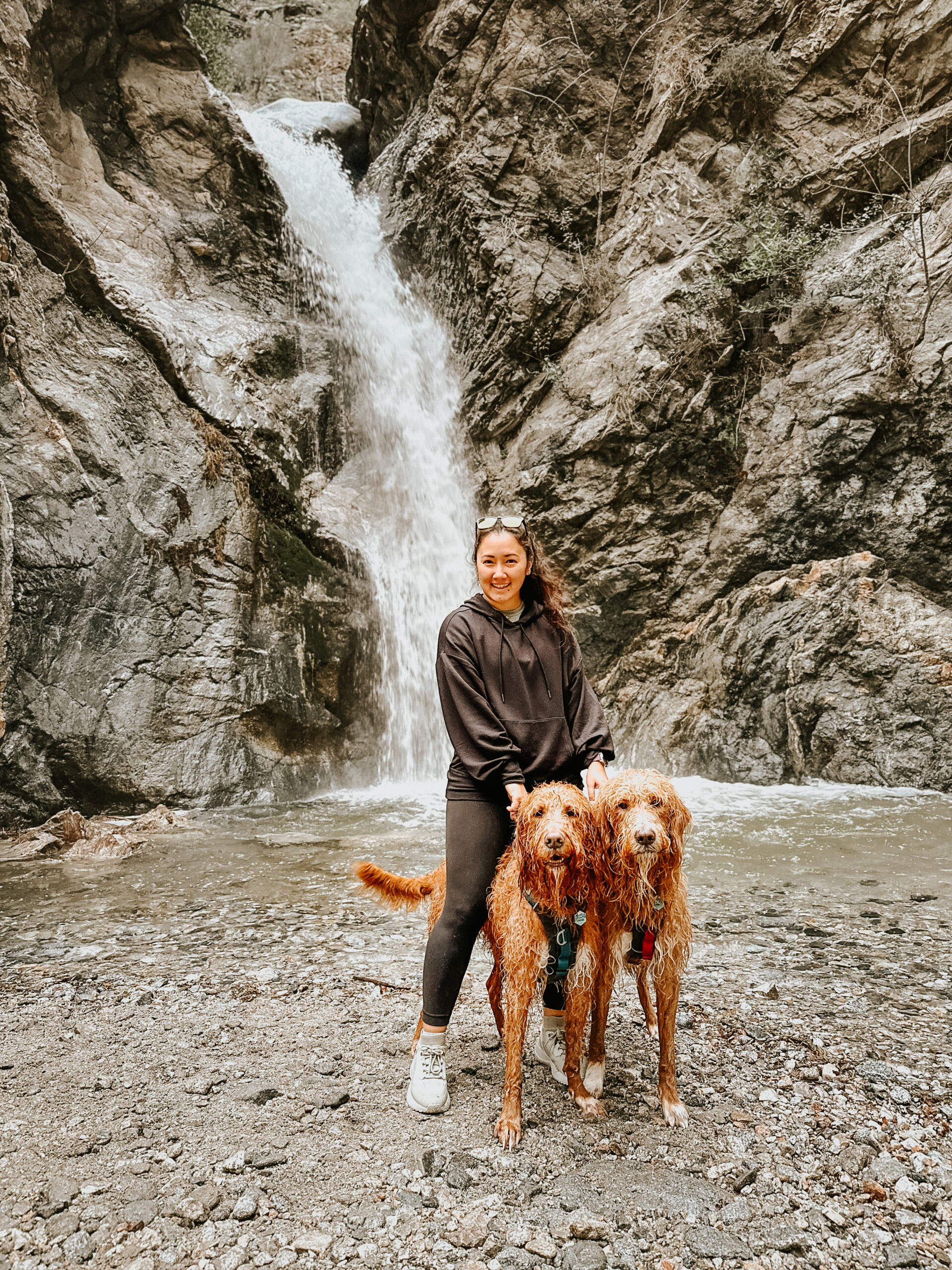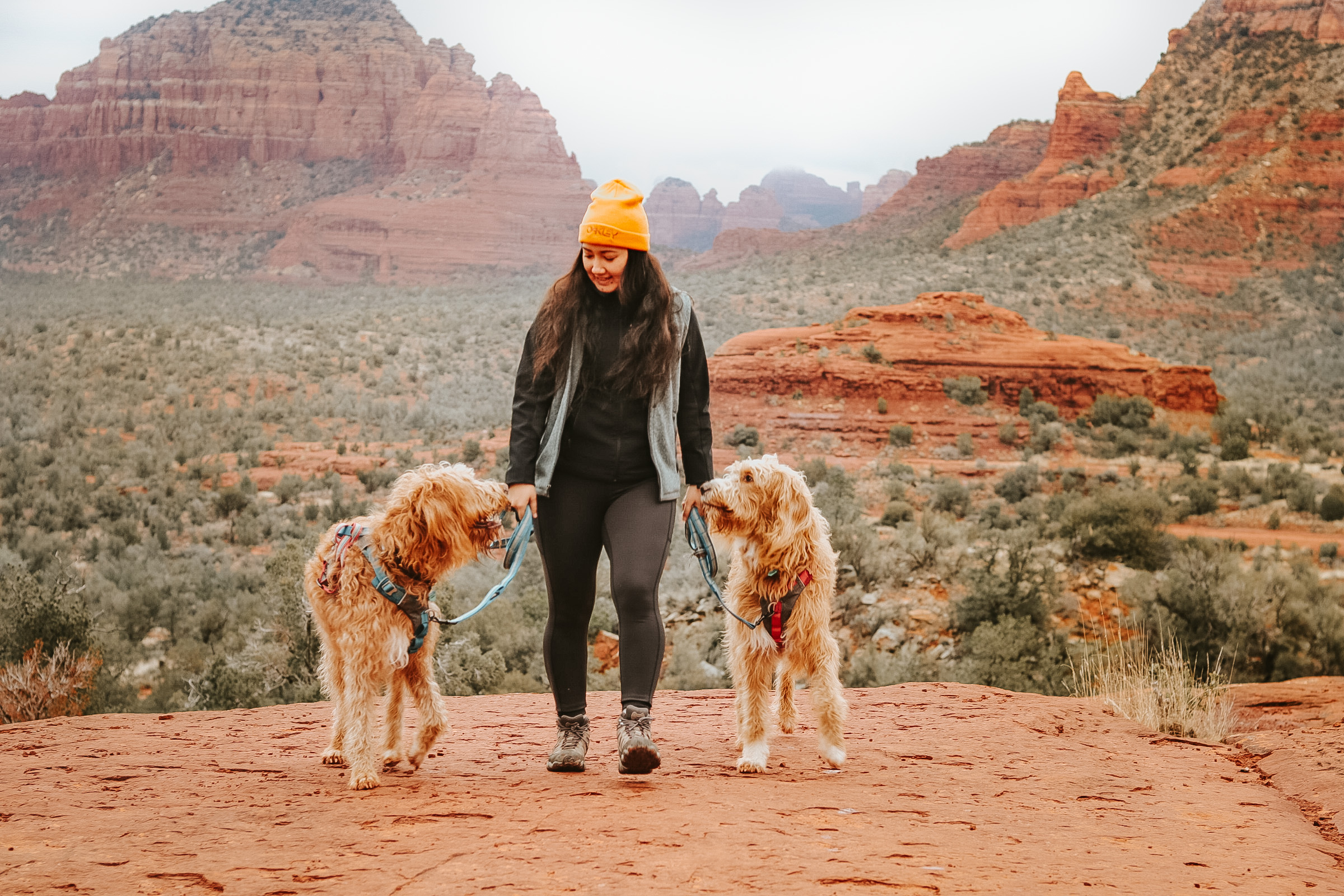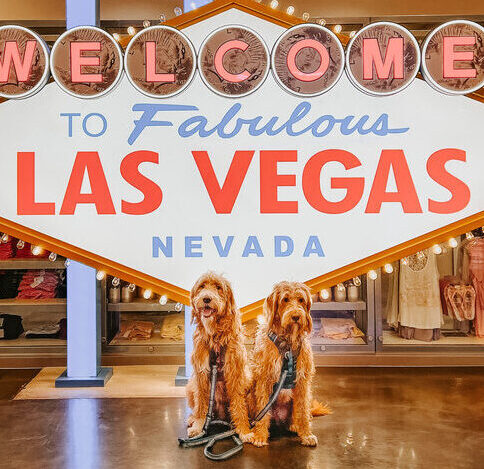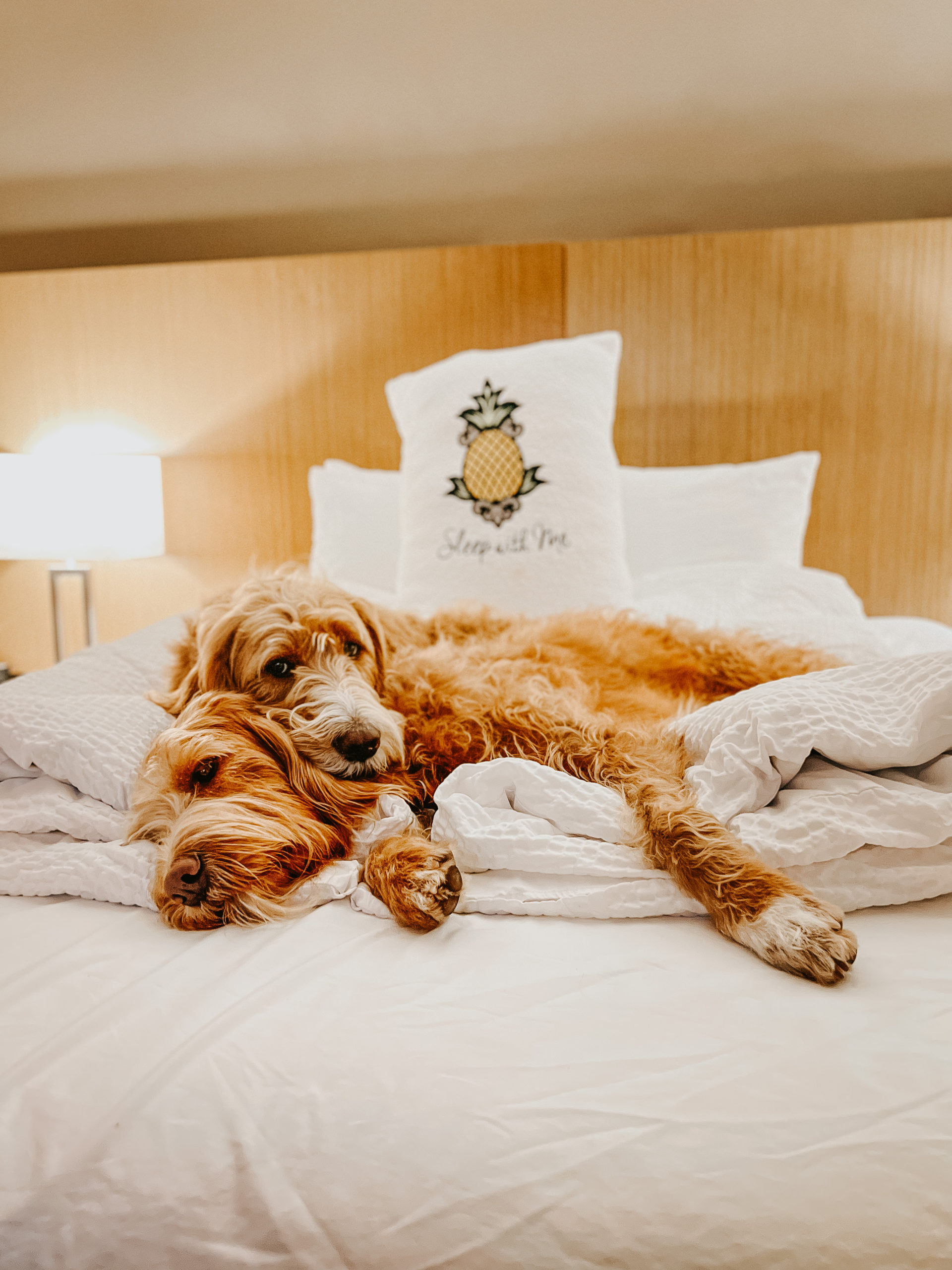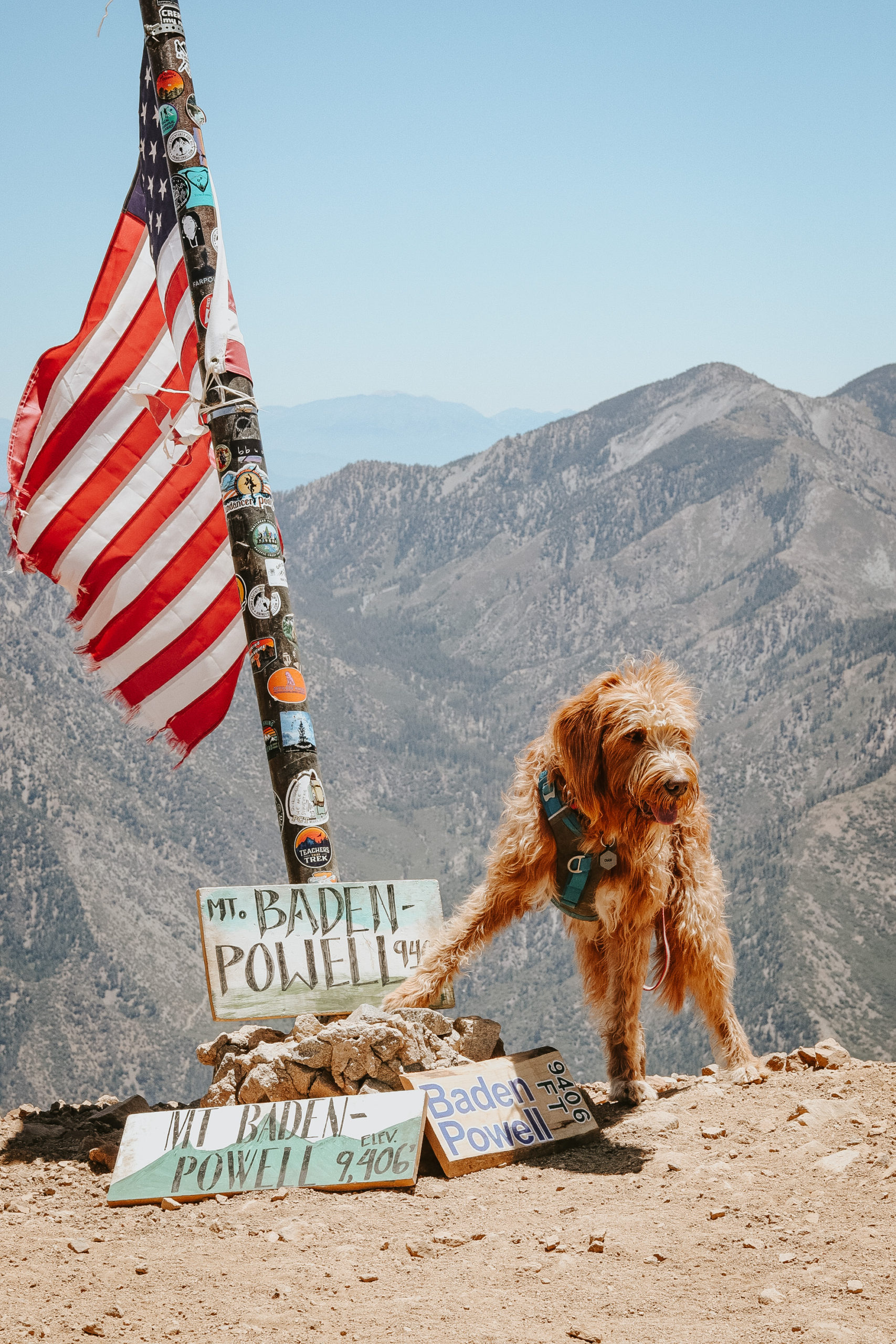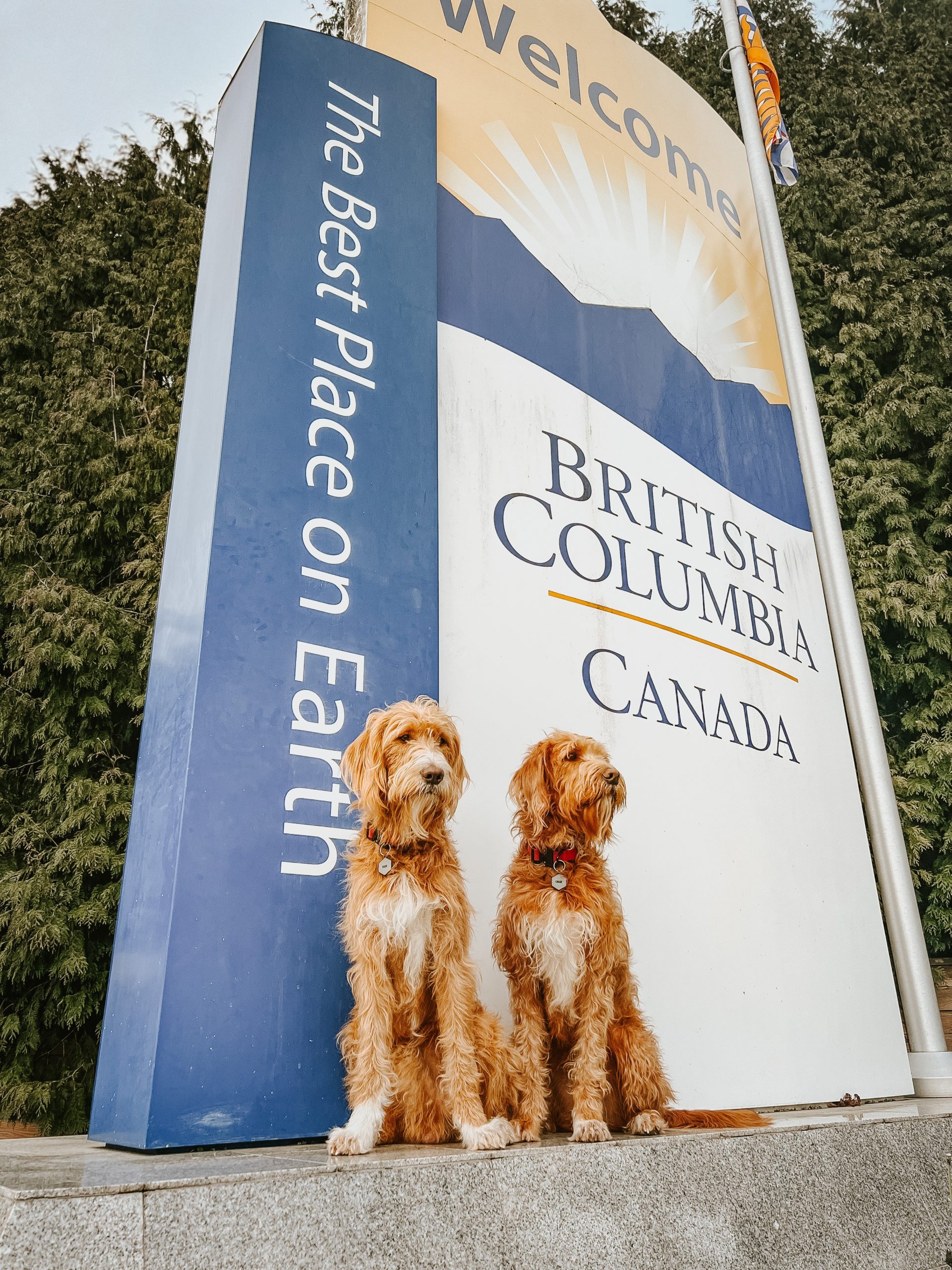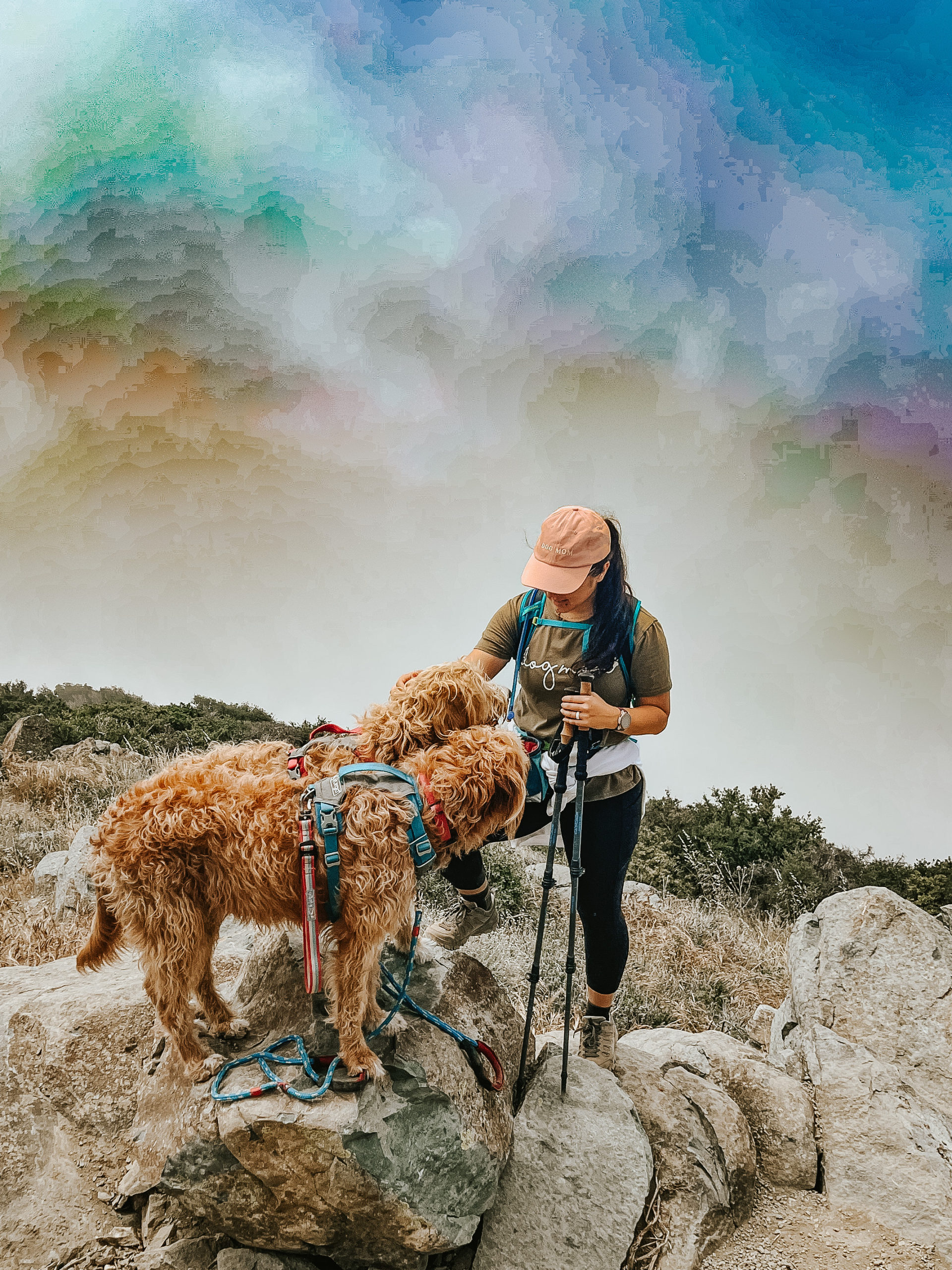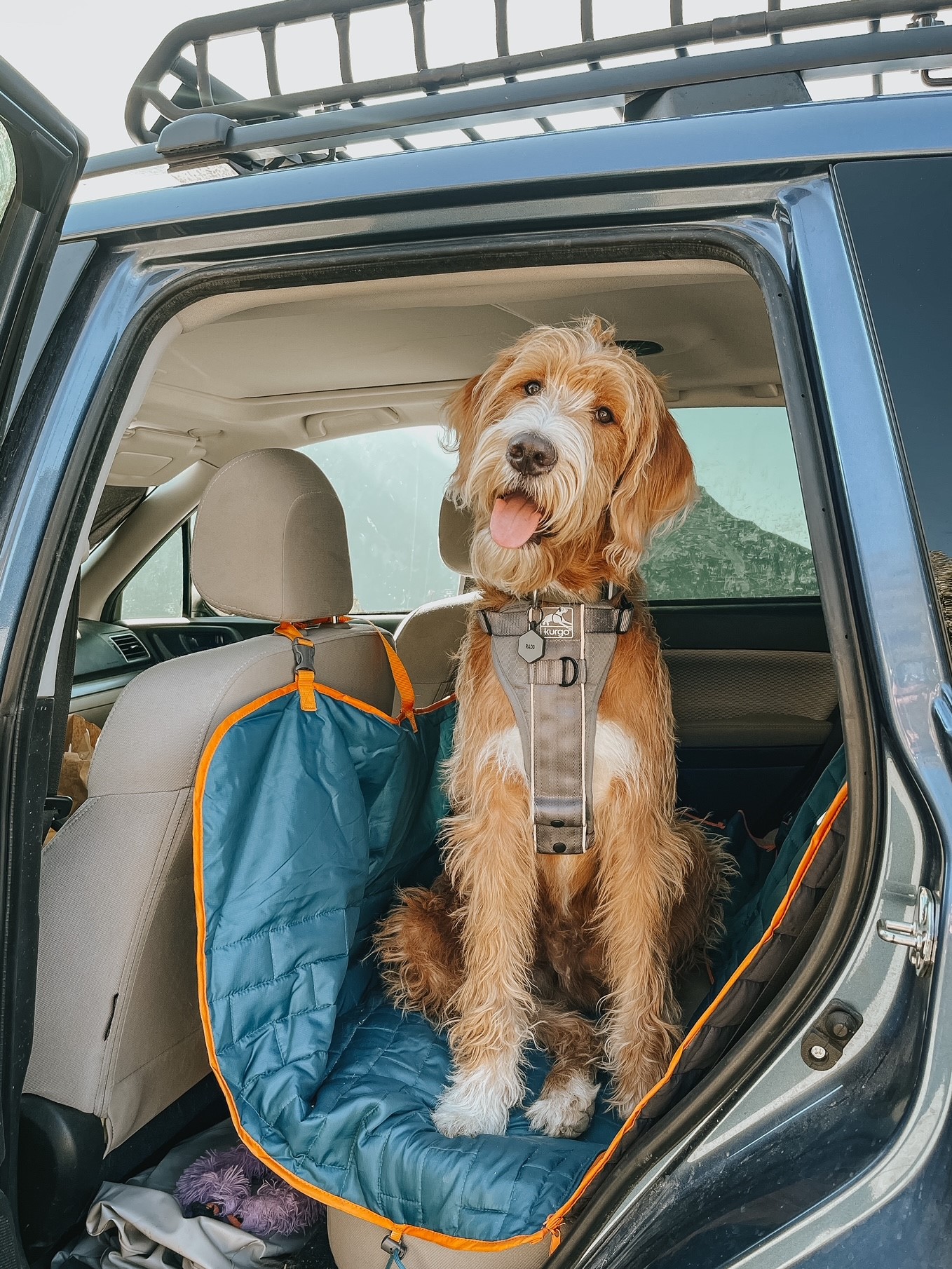Heading to Joshua Tree National Park with your dog? Like most National Parks, there are restrictions to a pet’s visit, but with a little compromise, there is plenty to enjoy!

Nestled in the heart of California, Joshua Tree National Park is a desert wonderland for adventurers. Whether you’re a hiker, climber or simply love the outdoors and stargazing, you’ll love the unique landscape and iconic Joshua Trees. For those who also prefer to travel with their dogs like we do, your trip might be more limited but there is still plenty to enjoy.
Safety First! While Joshua Tree offers a great environment for adventure, it’s essential to prioritize safety for both you and your dog. The desert can be harsh and the combination of desert air and elevation can quickly lead to dehydration, so be sure to carry enough water for both of you, protect your dog’s paws from hot surfaces, and be most mindful of the temperature. It’s best to keep your dog at home in the summer months.
You should also review the park’s rules on pets in the park. Generally speaking, leashed pets are allowed as long as they remain within 100 feet of roads, picnic areas, and campgrounds. You can check park maps for the most up to date acceptable locations.
So where can you go with your dogs in the park?
We have found that the best way to enjoy the park with your canine companion is by entering through the West Entrance Station. This entrance is closest to the trails and campgrounds we enjoy.
Luckily, according to the park’s rules, you are allowed to walk your dog anywhere you can drive your car, so we enjoyed walking the pups on a handful of dirt roads that the park has. This offered several paths to stretch our legs and enjoy the views. Some of our favorites include the roads around Hidden Valley Campground and the Geology Tour area. You can find many of these roads designated on the park map. We also suggest asking a ranger which roads offer the best scenery and are most appropriate for your skill level.
Most of the roads start near a parking lot and have pull-outs along the way where you can begin your walk. Just be sure you are not blocking traffic and that your dog is leashed the entire time. And also remember to pick up after your dog. Some roads have more traffic than others, so be sure to stay alert and move out of the way of any vehicles that need to pass.

One of our favorite pet-friendly paved trails is Keys View Trail. This is an easy and family-friendly trail (just about a quarter mile long in total) that offers a nice little loop to a spectacular overlook of the valleys below. There you’ll also be able to see the shining surface of the Salton Sea, San Jacinto Peak, and the usually snow-covered peak of San Gorgonio Mountain. Some have noted that on really clear days, you might be able to see Signal Mountain in Mexico, but that has become somewhat rare due to the poor air quality over the years. Our favorite time to visit Keys View is at sunset. However, traffic picks up quickly at that time so you’ll want to head over a little earlier to grab a parking spot.
Joshua Tree is one of the national parks that is pretty easy to explore without having to hike for miles. You’ll be able to stop at pullouts or take side roads to see the rock formations and Joshua Trees that make this park so special.
If rock climbing is your thing, or maybe you just enjoy watching the climbers while having your favorite snack, you’ll be happy to know there are four rock climbing areas within 100 feet of a road, picnic area, or campground and therefore pet-friendly. Check out the climbing areas at Belle Campground: Castle Rock, Hidden Valley Campground, Indian Cove Area (there are a few climbing areas here), and the Quail Springs Area.
And if you enjoy camping, there are plenty of campgrounds in and around the park to choose from.
So whatever reason brings you to the park, with a little compromise, there are ways to enjoy Joshua Tree with your dog.
Happy Adventures!
